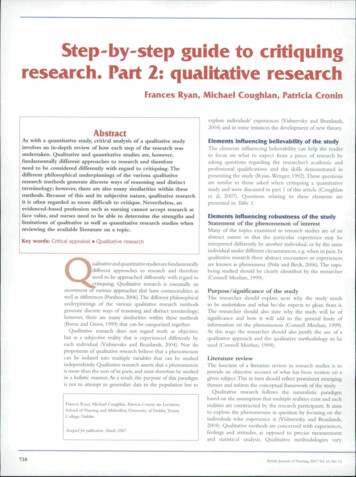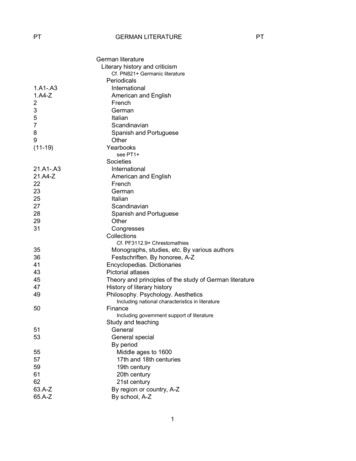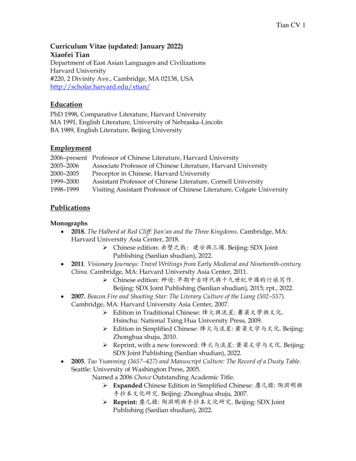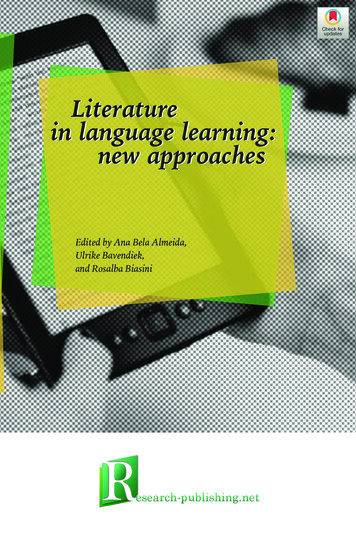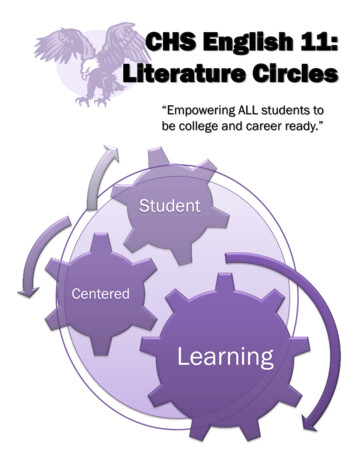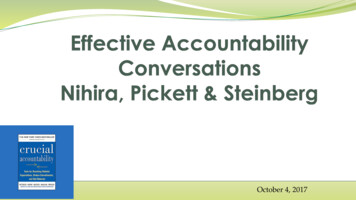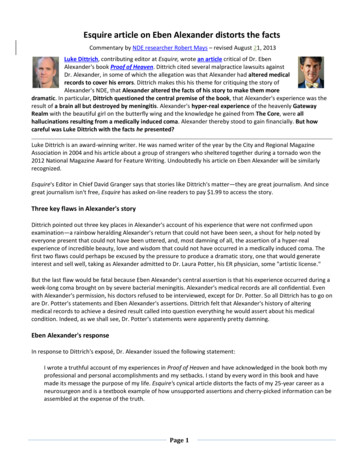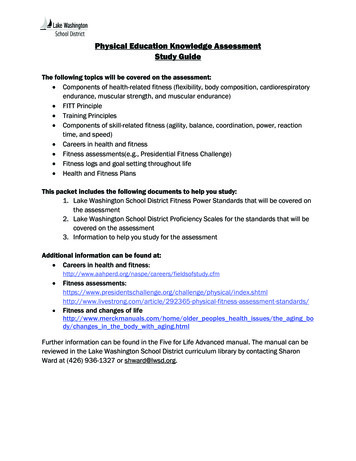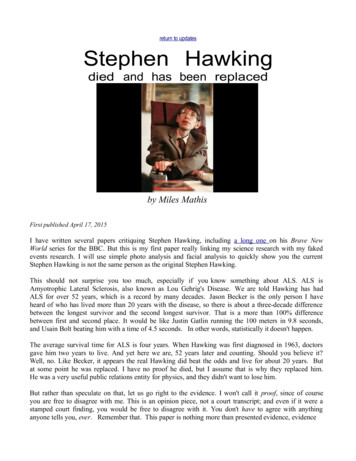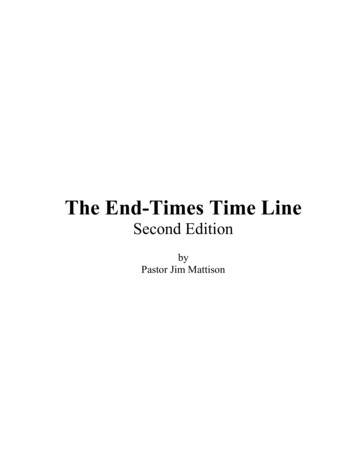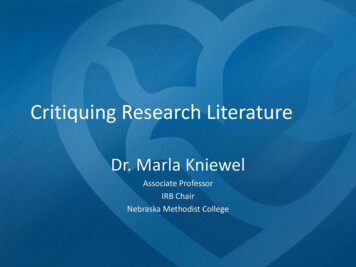
Transcription
Critiquing Research LiteratureDr. Marla KniewelAssociate ProfessorIRB ChairNebraska Methodist College
Objectives1.Explain the purpose of critiquing researchmethodology, rigor, study validity and studyreliability.2.Discuss different approaches in the criticalappraisal of research literature
Why Critique Research Literature? Assumption that printed words are absolutely true– Not all published research is scientifically sound– Studies with more ‘interesting’ results are more likely tobe: Submitted & accepted for publication Published in a major journal Published in the English language Research literature provides evidence to guide nursingpractice– Essential part of research, EBP, or QI projects– EBP is about incorporating the BEST evidence Failure to critique may adversely affect patient outcomes
What is a Critical Appraisal?The first step in transferring research knowledge into practice Weighing evidence to see how useful it is in decision making Balanced assessment of benefits and strengths of researchagainst its flaws and weaknesses Assess research process and results Skill that needs to be practiced
How do I appraise Research? Mostly common sense. You don’t have to be a statistical expert! Checklists help you focus on the most importantaspects of the article. Different checklists for different types of research. Will help you decide if research is valid and relevant.
Structure of a Research ArticleIMRaD Introductiono Background / Review of Literature Methodology Results Discussion
Introduction Background– Review of literature– Overarching Problem Purpose. Good fit between Problem and Purpose
Structure of a Research Article Methodology– Should describe exactly how the research wascarried out: Sample:– characteristics, selection, number, non-response Measures:– description of tests / questionnaires (validated?), data,outcome measures Procedure:– study design (qualitative, quantitative, controlled?)
Structure of a Research Article Results– Should tell the reader what the findings were.– All outcome measures must be reported– Confidence intervals for effect sizes should bepresented.
Structure of a Research Article Discussion– Interpretation of the results / relation to theory– Comparison with the results of other studies– Weaknesses / limitations of the study– Implications– Recommendations
Critical Appraisal Process1.Determine appropriateness for project2.Read entire article first– Organization & presentation3.Identify unknown terminology4.Thorough 2nd reading– Highlight each step of research process– Write notes/questions in margins– Circle key points5.Evaluate rigor of study6.Make a decision
Critical Appraisal Process: Appropriateness TitleAbstractSystematicReviewSingle RCTControlled CohortStudies (Quasi-Experimental)Level of EvidenceUncontrolled Cohort Studies Case Studies & Case SeriesOrigin of studyQualitative & Descriptive StudiesEBP Implementation & QI ProjectsExpert Opinion(Melnyk & Fineout-Overholt, 2015)
Critical Appraisal Process: 2nd Reading Methodology–––––Sample & Sample sizeEthical considerationsResearch designData collectionInstrument design Analysis Results
Rigor Quantitative Study– Reliability– Validity Qualitative Study– Trustworthiness ity
Critical Appraisal Process Identify Strengths & Weaknesses– Does study meet all of the appraisal criteria?– Does researcher identify weaknesses inlimitations section? Will the results help me care for my patients?– Were all clinical outcomes being measured?– What are the risks & benefits?– Is it feasible in your clinical setting?
Rapid Critical Appraisal Is the study design appropriate to the stated aims? Are the measurements likely to be valid andreliable? Was there a relevant effect size?– Clinical significance Is the outcome generalizable to your situation?
Research Appraisal Checklists Facilitates the appraisal process– Novice & expert appraisers Individualized for type of study––––Quantitative study designsQualitative StudiesMixed methodsSystematic reviews (meta-analysis) Examples– Joanna Briggs Institute– Critical Appraisals Skills Programme (CASP)– Melnyk’ s Rapid Critical Appraisal Tool
References Boswell, C. & Cannon, S. (2020). Introduction to nursing research: Incorporatingevidence-based practice (5th ed.). Burlington MA: Jones & Bartlett Learning. Buccheri, R. & Sharifi, C. (2017). Critical Appraisal Tools and Reporting Guidelinesfor evidence-based practice. World Views on Evidence-based Nursing, 14(6), 463472. Melnyk, B. & Fineout-Overholt, E. (2015). Evidenced-based practice in nursing andhealth care: A guide to best practice (3rd ed.). Philadelphia: Wolters Kluwer Health. Melnyk, B., Gallagher-Ford, L., & & Fineout-Overholt, E. (2017). Implementing theevidenced-based practice competencies in Healthcare. Indianapolis, IN: SigmaTheta Tau International. Polit, D. & Beck, C.T. (2017). Nursing research: Generating and assessing evidencefor nursing practice (10th ed.). Philadelphia: Wolters Kluwer.
methodology, rigor, study validity and study reliability. 2.Discuss different approaches in the critical appraisal of research literature. . Research literature provides evidence to guide nursing practice -Essential part of research, EBP, or QI projects . (CASP) -Melnyk' s Rapid Critical Appraisal Tool. References Boswell, C .
